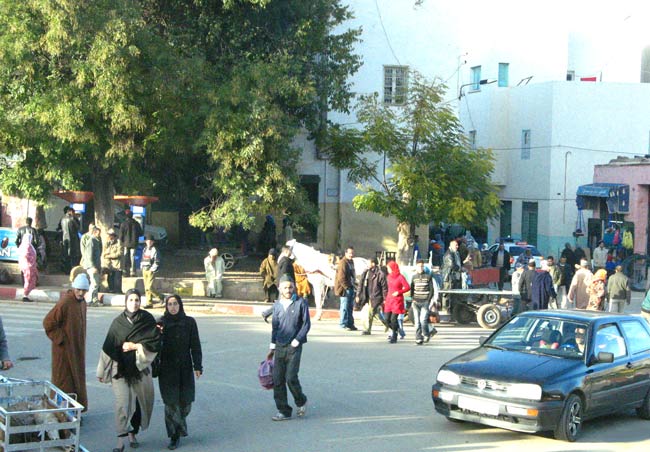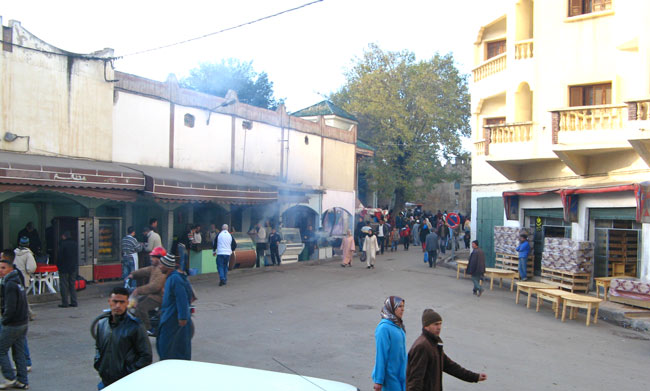November 14-16, 2010
To go Back at any time,
use Browser’s “Previous Page”
Fez reached its peak in the 13th and 14th centuries, when it replaced Marrakech as the Moroccan capital. It remained the capital for over four hundred years. Today, Fez is a UNESCO World Heritage site and the country’s cultural and spiritual center.
The old city (or medina) of Fez is believed to be the world’s largest car-free urban area. It covers only around a square mile, but contains over 9000 streets and around 150,000 residents. Virtually unchanged since gigantic ramparts were built around it, the medina remains a medieval city in design, a self-enclosed world that works to its own internal rhythms.
Before undertaking an exploration of such an awesome labyrinth, we fortified ourselves with a traditional Moroccan dinner at a restaurant just inside the medina walls:
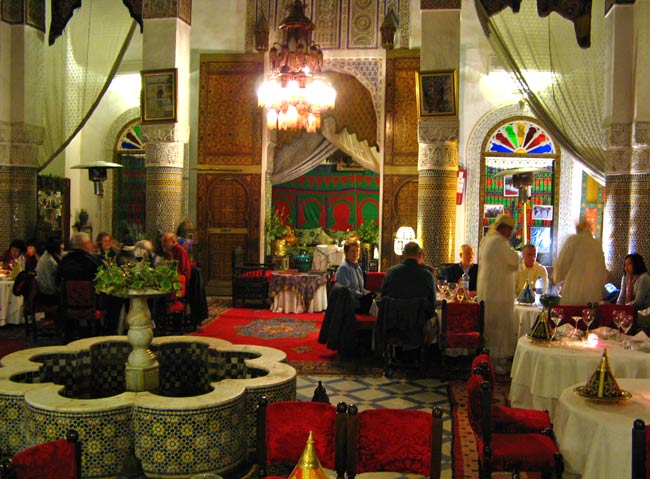
Some talented musicians and a graceful belly dancer provided the evening’s entertainment:
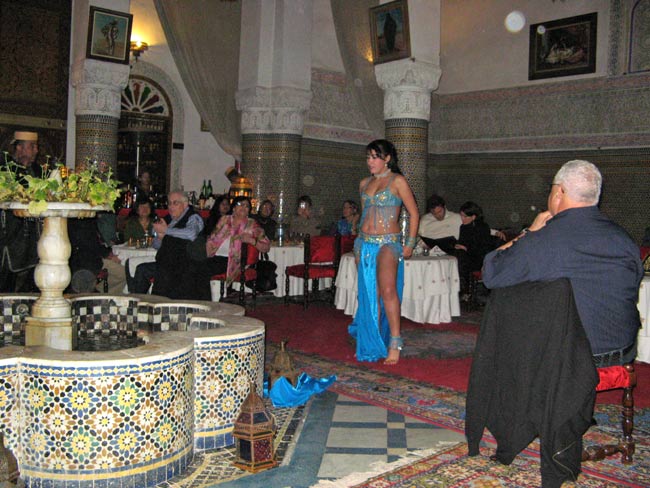
Next morning, with overnight rain showers just letting up, we stopped briefly at the Fez Royal Palace. Although not open to the public, the Palace is still impressive from the outside. It serves as the residence of the King of Morocco when he visits this area.
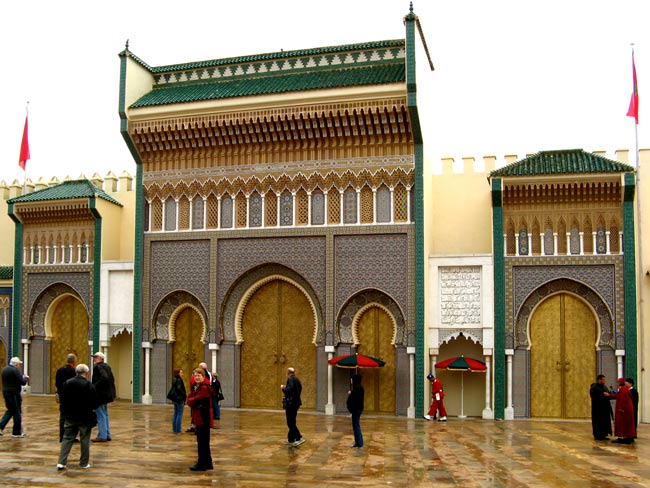
At an overlook of the old city shortly before entering its gates, what surprised us most were the innumerable satellite dishes.
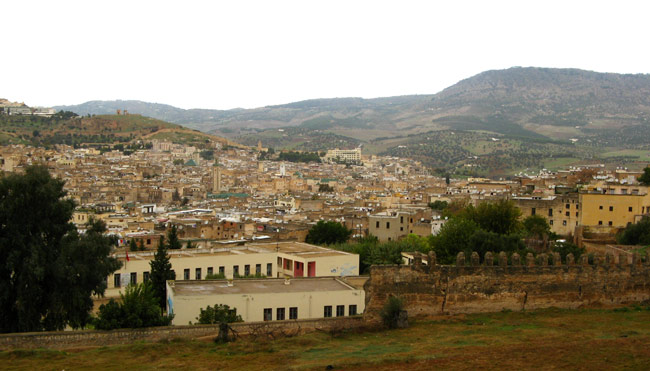
As a practical measure, our group was broken into two halves with a guide for each while touring the medina. Even at that, becoming separated always seemed a possibility in the narrow, busy alleys. Below, we have just entered:
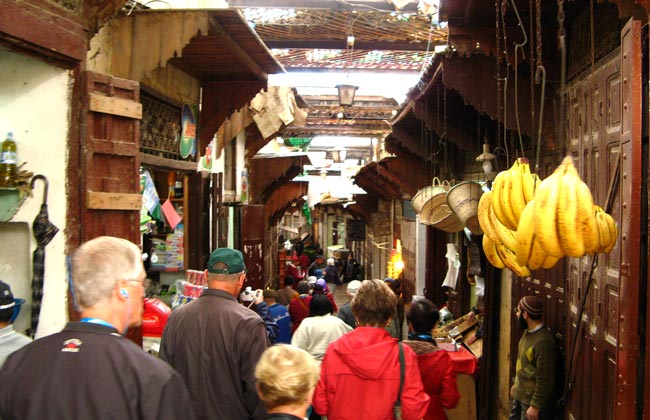
Inside are endless lines of shops selling everything imaginable – from ornaments and textiles to fruit, meat, fish and vegetables and tourist trinkets. Crowds are dense, heavily-laden donkeys monopolize whole passageways and some connecting side streets are so confining and dark they seem to be underground.
Not surprisingly, the medina presents problems to the first-time visitor, especially in navigating its mind-boggling geography. Maps are virtually useless as most of the streets are either unnamed or only given in Arabic script. Unless a tourist has a keen sense of adventure and no deadline for finding his way out, a guide is highly recommended. (We did not have a GPS suitable for hiking but it would have been interesting to use one in this unique environment.)
Not willing to flash my camera in the local’s faces, I lack photos that show what it is really like to wander through this warren. To compensate, the next five pictures from the Internet depict scenes almost identical to what we saw:
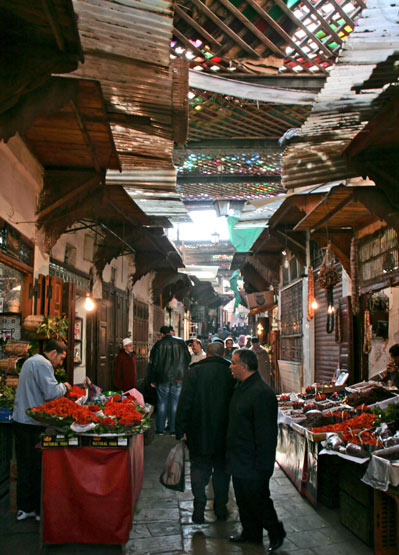
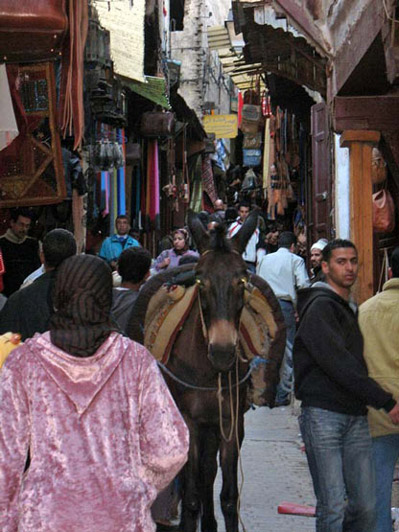
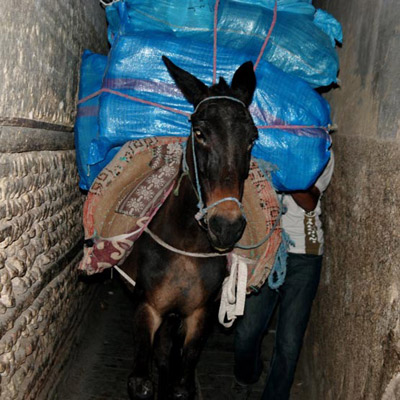
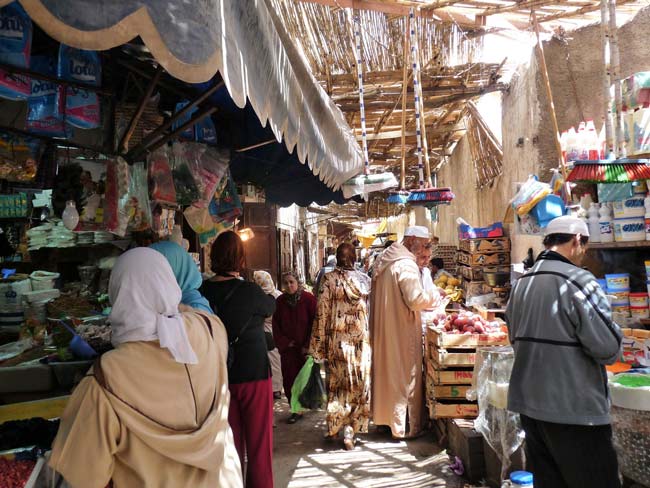
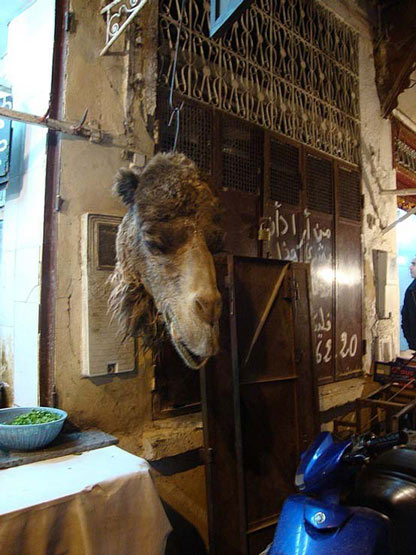
All of us have seen wall-mounted heads of hunting specimens so I do not know why this camel’s head outside a butcher’s shop seemed so perturbing. You may also have noticed the scooter. Unfortunately, despite the cramped conditions, a few insist on inflicting their cacophonous machines on passersby.
For the price of sitting a spell and enjoying mint tea, we were treated to a colorful exhibition of Moroccan carpets --- all in the hopes we would find them too irresistible to leave behind. Hope springs eternal.
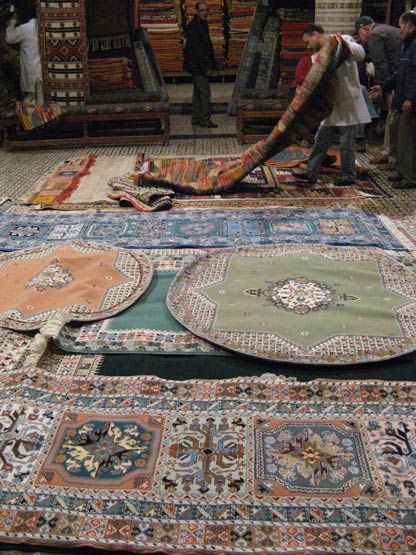
Later, through this portal, we were able to glimpse a fragment of the Kairouine Mosque. Covering a large area at the very center of the old city, it is surrounded by a number of Islamic schools.
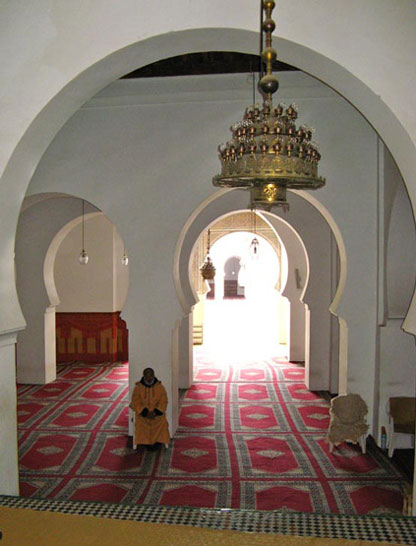
Also, in the medina is the shrine and tomb of Moulay Idriss, who ruled Morocco from 807 to 828 and founded the city of Fez. He is regarded by Muslims as a saint. Around the corner from the shrine entrance is a slot on the wall for depositing written petitions as well as donations for shrine support.
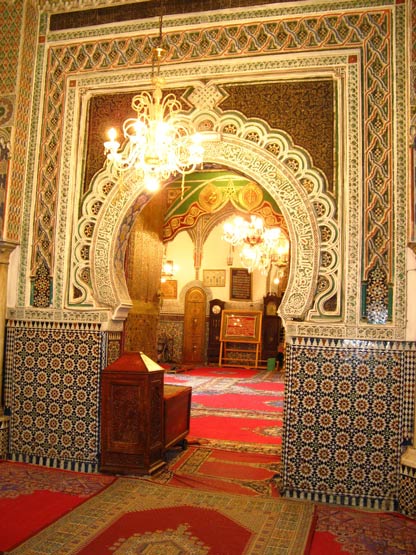
One of the wonders of the medina is its tannery --- reputed to be the oldest leather tannery in the world. It dates back at least nine hundred years!
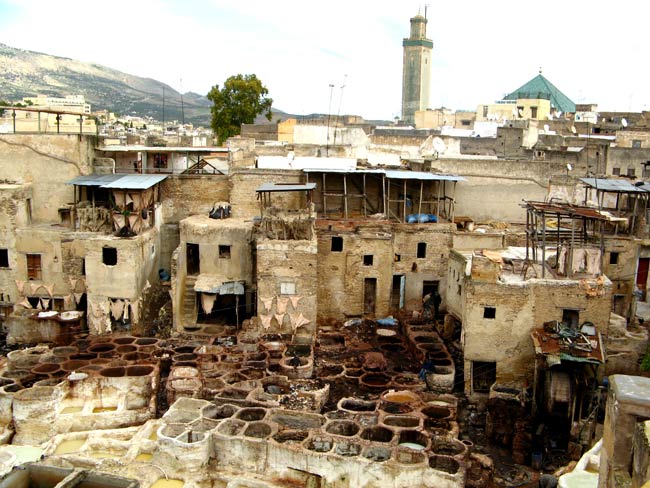
There is no charge to climb steps to a viewing balcony where every observer is offered a twig of mint.
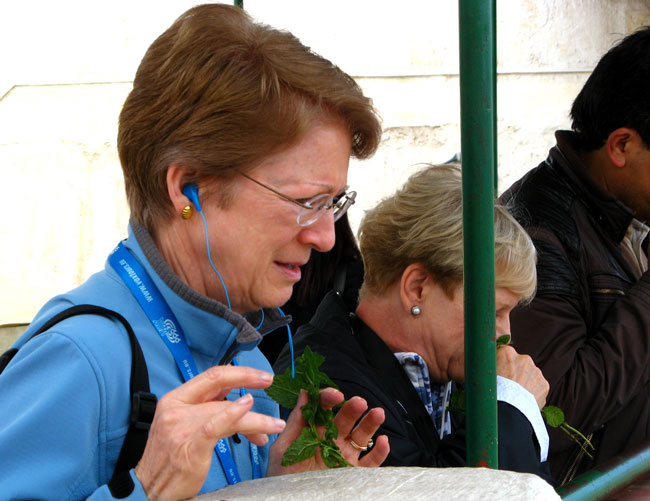
That mint, held to the nose, is the only way most folks can tolerate the awful stench wafting up from below. (An alternative, suggests my spouse, is to breathe through your mouth.) The odor is from the animal by-products used in the tanning process.
The workers --- such as the one circled below and enlarged in the following photo --- stand in stone vessels arranged like honeycombs. The vessels are filled with different dyes that also color the arms and legs of the men working in them.
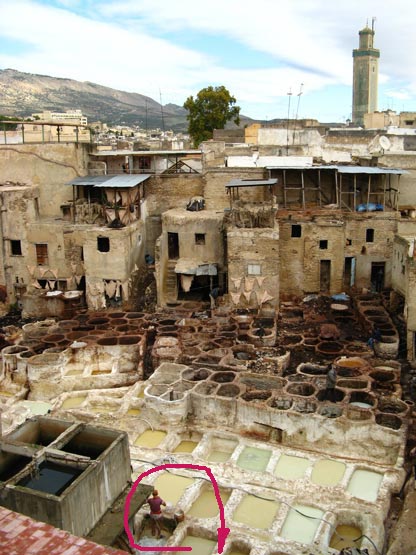
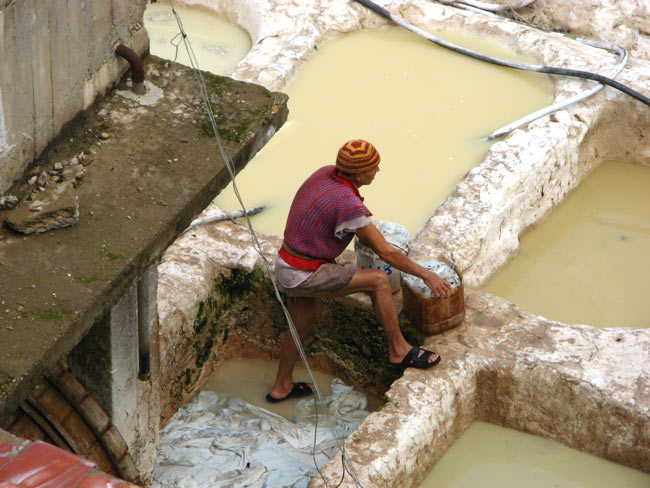
I hope these guys are well-paid.
Back-tracking down the same stairwell somehow leads to the leather showroom. Is anyone surprised? Despite the disgusting smell of the tanning process, the method does produce a soft, supple and attractive leather. I will probably always regret not buying that manly black leather jacket. : )
To round out our stay in Fez, we opted for a trip to the village of Bhalil --- off the beaten tourist track but not far away. The first reason for traveling there is that it is a pleasing little village, with fairly well-kept houses, divided by a seasonal river that is crossed by numerous bridges. Parts of Morocco like this, where people work in the streets, wash their clothes together, make simple handicrafts or prepare crops of different kinds --- all in a relaxed tone --- will likely soon disappear.
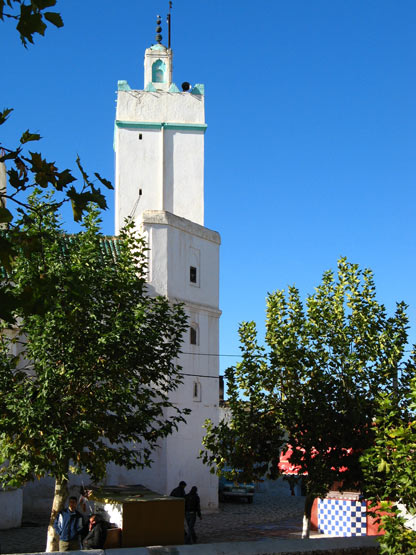

We climbed up through the village, beyond where our coach could go, to see the second reason why some travelers choose to come here: a cave house --- still in use, still occupied, its outside indistinguishable from that of “normal” houses.
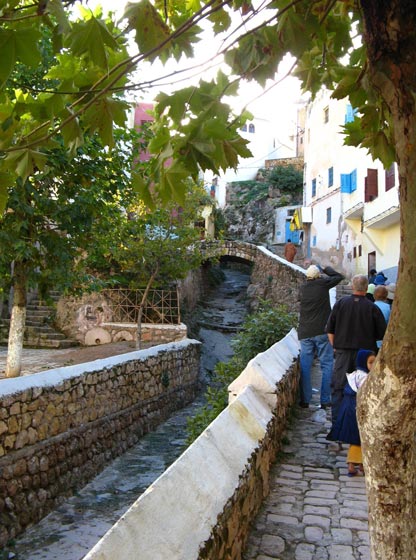
As fascinating as the cave house turned out to be, it was eclipsed by its occupant, a woman some 90 to 100 years old who wowed us with her youthfulness. Below is our first view of her, standing next to our guide. We paused about six feet away and she immediately walked briskly toward us, stopping just short of touching anyone. Removing the pail from her head, she then passed it to anyone who wished to heft it. We were “gobsmacked,” as the Brits would say! The pail was filled almost to the top with water!
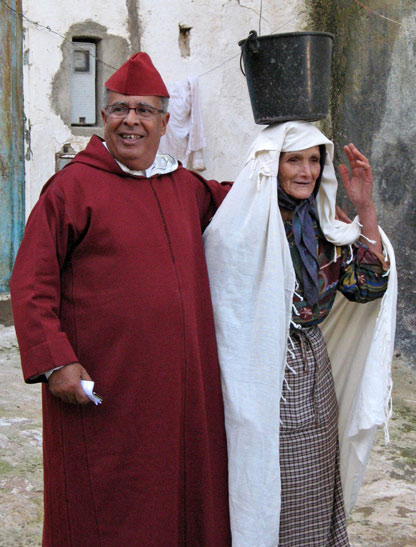
... a truly incredible feat for anyone, let alone a woman as elderly as she!
Her home has been hollowed out of the tufa rock, decorated and furnished with the amenities of modern life. It is cool in summer and keeps out the worst of the chill in winter. In short order, we were all seated in the U-shaped living room and offered mint tea.
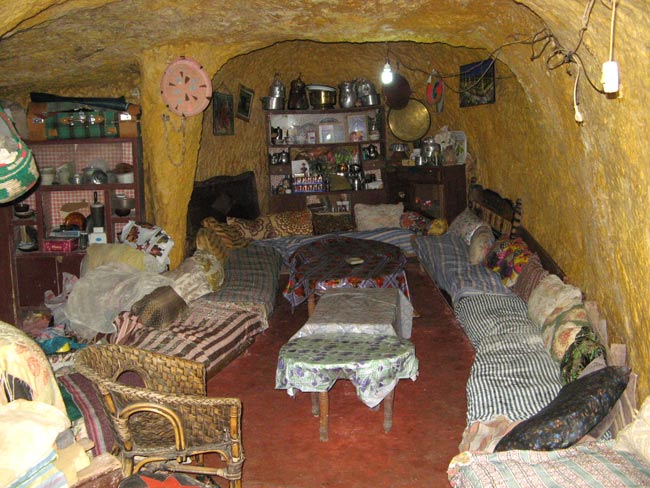
This spry and cheerful woman, the mother of 12 children, lives in this cave-house with her son-in-law whose bedroom is on the second floor! Here it is, just above the main entrance:
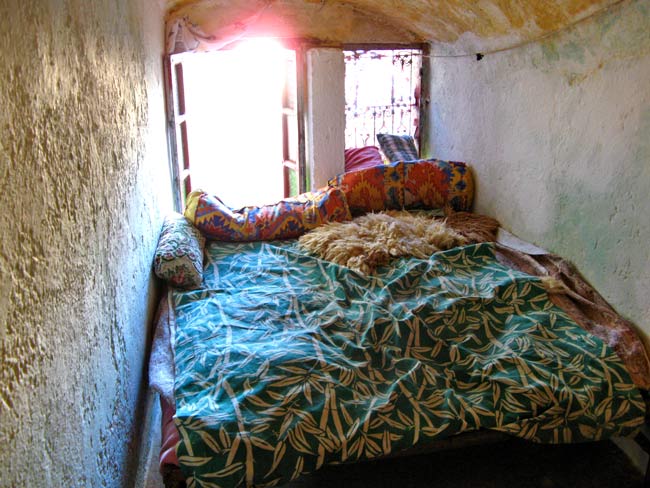
In our last view of this one-of-a-kind woman, she is standing at her front door with our guide. He has been here countless times with various tour groups and, it was obvious, the two of them share a real bond of friendship. He seemed genuinely sorry to leave.
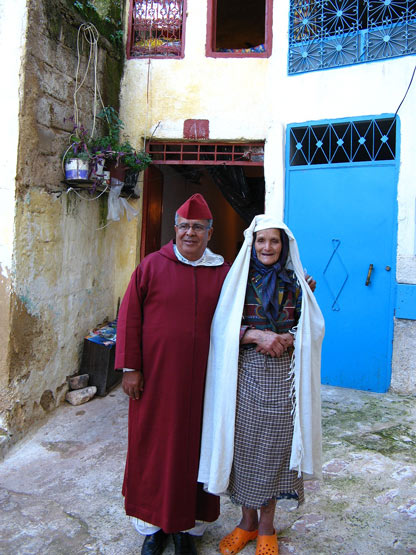
Close to Bhalil is the small town of Sefrou. We made a stop here to see the village and view its Jewish synagogue, now a museum:
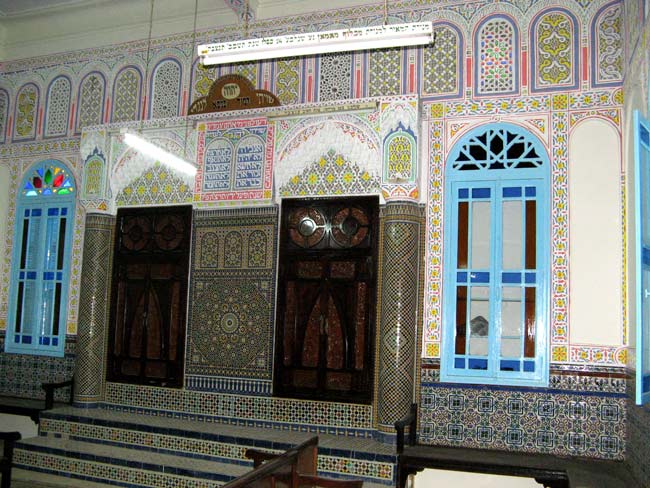
This town, like Morocco itself, once had a sizable Jewish population. Since the 1940’s, though, most Jewish Moroccans have emigrated to countries where life is easier for them. Many have emigrated to Israel. Jews are now only a tiny fraction of the population --- much, much smaller than 1%.
It is worth noting that the Moroccan Constitution does provide for freedom of religion, and the Government generally respects this right in practice; however, there are some restrictions. While non-Muslim communities can openly practice their faith, the Constitution provides that Islam is the official state religion.
Christians in Morocco constitute approximately 1% of the country’s population. (Morocco had 35,000,000 inhabitants according to a 2009 estimate.) However, distribution of Christian materials among Muslims is illegal and any Moroccan who converts to Christianity generally faces social ostracism.
Before boarding our coach for our return to Fez and preparations for pack-out, we had a good view of downtown Sefrou from the synagogue steps:
